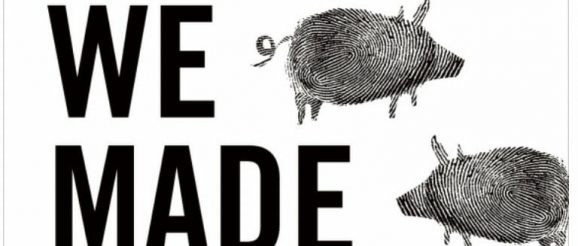Life as We Made It, 50,000 years of human innovation

We look at this wide ranging in time book, Life as We Made It. It goes back tens of thousands of years, all the way to the present to assess how humans have and are planning to interact with the plants and animals around them. Written by Beth Shapiro it is thought provoking and challenging in terms of what is possible and what could or should not be done. Published by One World, on October 21st, you can see more about the book here.
Life as We Made It, 50,000 years of human innovation reviewed
This book is written in a light, accessible and engaging way. It is one that the general reader can, mostly, pick up and follow quite easily. I say ‘quite’ because while the idea of breeding sterile mosquitoes seems cool, it can be hard to follow the logic that if the mosquitoes die, how can they therefore render other ones sterile too. From Shapiro’s stats though it would suggest that these strategies have served to reduce populations by up to 90% in some areas. For everyone plagued by mozzies that is definitely a win.
Shapiro does a good job of explaining the evolution of humanity’s interactions with animals in a desire to breed better, bigger, more milk variations. This is immediately understandable, after which came genetic engineering, cloning and now, at a more micro level, genetic editing. She explains well why it is still going to be a while before we can de-extinct woolly mammoths, due to around 1 million lines of genetic edits that would need to be made. And, as her classroom encounters illustrate, with children’s ability to pithily drill down to the core questions, where would they live now anyway as we have destroyed their habitats?
At times her conversational style and a rapid switch between different topics, animals and locations did leave us a little lost at times. Eventually we worked out that picking up the woolly rhino’s horn was bad, not for genetically contaminating it, but because it would be hard to shed the smell from her hands. At the same time we did enjoy reading the book, found it deeply thought provoking, and we would recommend it to a wide range of readers.
Around two to three decades ago the protests against genetically modified food types seemed warranted and necessary due to far too many unknowns. Now, with more precise genetic editing, examples such as Golden Rice discussed by Shapiro demonstrate that we are now in more nuanced times, and this is a topic that does need to be examined and more closely debated. Shapiro’s book is timely and well worth reading.
Curious what “Life As We Made It” is about? Check out the trailer made by @reelsmartvideo for @BasicBooks. And please don’t laugh too hard at the home video (I did my best! #WFHfun #thanksKiddos) ? pic.twitter.com/ZcIAbJLe72
— Beth Shapiro (@bonesandbugs) October 15, 2021
More about this book
Life as We Made It is a scientific history – spanning 50,000 years – of how humans have consistently meddled in, redefined, and occasionally redesigned, nature.
Drawing on decades of research and delving into cutting-edge technology such as Crispr-Cas9, Beth Shapiro tells the story, urgently relevant today, of the surprisingly long history of human intervention in evolution through hunting, domesticating, polluting, hybridizing, conserving and genetically modifying life on Earth.
Scaremonger myths on the dangers of interference are cast aside, replaced instead with the true risks and incredible opportunities that new biotechnologies will offer us in the years ahead. Not only do they offer us the chance to improve our own lives, but they increase the likelihood that we will continue to live in a rich and biologically diverse world.
Praising How to Clone a Mammoth, the Daily Mail wrote ‘Shapiro does an excellent job of showing that the realities of genuine science can be as exciting as the fantasies of science fiction.’ After all, the power of the science of tomorrow is immense. But, as Shapiro eloquently shows, human manipulation of the natural world is not a recent phenomenon, and there is much we can learn from analysing the history of our own behaviour.
Beth Shapiro is Professor of Ecology and Evolutionary Biology at UC Santa Cruz. She has appeared on the BBC, National Geographic and Discovery, and written for the Financial Times and Observer. She is the author of How to Clone a Mammoth, which won awards from the Association of American Publishers and Independent Publisher Book Awards. Beth is an experienced and engaging speaker, and many of her talks are available online, such as her Tedx talk, her Royal Institution talk, and her interview on BBC World Service – The Forum. She has recently appeared on Netflix show Bill Nye Saves the World as a guest expert. Follow Beth @bonesandbugs
See more reviews here.
